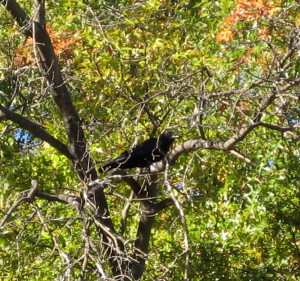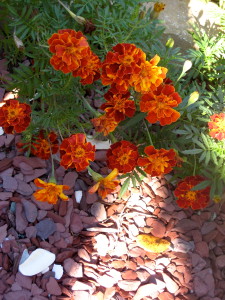
– Photo by Jan Ketchel
A man was angry all the time. He drank every night to numb his anger. He wanted to change so he decided to meditate. His intent set, he got up early in the morning, took a shower and sat at his desk. Before long his consciousness left his body, taking him out of his apartment and the city he lived in. It withdrew further and further from the earth. Soon he was in outer space looking down at the world, seeing it in its entirety as his awareness expanded and expanded. He entered infinity and experienced the endlessness of it and the knowledge that he was part of it all, that all life was energetically connected and infinite. When he returned to his body he was a changed man, his perception of life and the world transformed forever. Even so, he knew that in order to hold onto what he had learned, to keep experiencing himself as infinite, he had to shed his anger. Even though he had experienced the light, he knew he still had to face the darkness within.
Not everyone has such an experience when they sit down to meditate for the very first time, but many meditators eventually have this same kind of experience, the experience of the self as energy, interconnected to and a part of all energy. During such experiences the issues of the self pale in comparison to the ecstatic experience. If we are to truly evolve, however, the angry man was right; we must face our darkness.
Last night I dreamed. I was traveling on a train beside the ocean. There was a voice speaking throughout the dream, instructing, chanting a calming mantra, saying that meditation must happen all the time. From the train window I could see a small island with a Greek style temple on it not too far from the coast. I could see that it was possible to get there and I desired to go, but each time I saw the temple the ocean was churning up gigantic waves, fierce and threatening. Many times throughout the night I rode this train. The scenario was always the same. I’d hear the voiceover, see the temple and wish to be on it, notice the dark and threatening waves impossible to traverse. I’d get off the train and enter a large hotel where a gathering was taking place. A lot of people were there, walking around, keeping their energy to themselves, not talking or interacting. Everyone was meditating where they were. I did the same. Outside the vast windows of the hotel I could see the churning ocean and the temple on the island. The voiceover still said the same thing, “Meditate all the time.”
When I woke up, I knew that the message in the dream was that in order to get to the temple we must endure the struggles that we are faced with, the darkness within—the churning ocean. Just like the angry man who wished to change, deep inner work is necessary in order to attain and maintain the transcendent experience—the temple.
During my recapitulation this was exactly what I learned. In spite of the most amazing experiences that literally cracked through reality and presented me with the most stunning view of my life and the world, I knew I still had to face my deepest secrets and challenges if I was to have full access to my energetic self and be able to actually live as the changed being I was working so hard to become. Having a deep and meaningful spiritual practice was as important as doing my recapitulation and, in fact, became the perfect companion to the shamanic work I was doing. It was essential to the entire process.

– Photo by Jan Ketchel
The true work of recapitulation is reconciliation with the fragments of self, healing the wounds of life, and even lifetimes, so that the true self, the spirit, may finally take its rightful place as the true self in the world. The goal of my recapitulation was to find the means to live from my deeply spiritual self all the time. I could only do that by giving that spiritual self a practice that was as deeply meaningful as the recapitulation. And so, my lifelong practices of yoga and meditation deepened as a result, becoming the prefect companions to my shamanic work.
I encourage everyone to develop a spiritual practice. If you desire to fully experience and embrace your spiritual self, to live as a changed being, from that place of deepest truth, then a spiritual practice is imperative. A spiritual practice will accompany you through life, bringing you constantly back to experiences of yourself as an energetic being, bringing fulfillment of our deepest interconnectedness. (In fact, if everyone was doing a deep spiritual practice all the time our world would surely change, but that’s another blog!) Meditation, as instructed in my dream, can be done all the time. It’s simple and everyone can do it. It doesn’t take equipment or a gym pass. It only takes mindfulness.
For instance, right now I am sitting and writing this blog, but I am also meditating. I am writing; I am only writing. I am mindfully focused only on writing and honing the message of this blog. When I get up, I will focus on getting up. Perhaps I will say: “I am getting up now. I am walking away from my computer. I am breathing. I am walking.”
These are mindful messages to the self that cancel out the constant thoughts that circulate and defeat us. At the same time that I am doing this mindful thought-erasing activity, I am also mindful that at another time I will examine those other thoughts. I will find out where they come from, how they came into my head, who said them to me, and why I still carry them. I will face what is dark and disturbing within myself, mindfully, just as I mindfully remain present in my daily life, focusing on everything I do throughout the day. To have peace of mind, I must constantly and mindfully work on myself. But to remain a balanced and present being, sometimes it’s appropriate to have a calm mind, and at other times it’s appropriate to pay attention to the mind and confront our issues and thoughts. As our mindfulness practice grows we become better able to manage our minds and maturely handle what comes to challenge us.

I am only drinking tea…
– Photo by Jan Ketchel
A practice of mindful meditation is the perfect way to gain balance. To periodically shift our thoughts away from negativity, we simply state what we are doing, over and over again. As the voice in my dream said to me during the night: we can meditate all the time. We might say: I am sitting at my desk working now. I am eating now. I am reading now. I am driving now. I am walking now. I put my foot down, I breathe and I walk, one step at a time, mindfully. I am walking.
A mindfulness practice offers the opportunity to gain balance and calmness even in the midst of turmoil. If we do it often enough, we eventually do it without even thinking. We can turn off bad thoughts by introducing mindful thoughts.
I am good. I am writing. I am breathing. I am love. I am sending you love.
In mindfulness,
Jan








